June 1, 1921: The attack on Black Wall Street concludes with more shootings, beatings, aerial assaults, firebombs and the complete destruction of Black Wall Street.
Throughout the early morning hours on June 1, groups of armed whites and blacks squared off in gunfights. At this point, the fighting was concentrated along sections of the Frisco tracks, a dividing line between the black and white commercial districts. A rumor circulated that more blacks were coming by train from Muskogee to help with an invasion of Tulsa. At one point, passengers on an incoming train were forced to take cover on the floor of the train cars, as they had arrived in the midst of crossfire, with the train taking hits on both sides.
Small groups of whites made brief forays by car into Greenwood, indiscriminately firing into businesses and residences. They often received return fire. Meanwhile, white rioters threw lit oil rags into several buildings along Archer street, igniting them.
Fires:
At around 1:00 a.m., the white mob began setting fires, mainly in businesses on commercial Archer Street at the southern edge of the Greenwood district. As crews from the Tulsa Fire Department arrived to put out fires, the white mob turned them away at gunpoint.
By 4:00 a.m., over 20 black-owned businesses had been set ablaze.
As news traveled among Greenwood residents, many began to take up arms in defense of their community, while others began a mass exodus from the city. Throughout the night, both sides continued fighting, sometimes only sporadically.
Whites Takeover Greenwood:
Upon the 5 a.m. sunrise, reportedly a train whistle was heard (Hirsch said it was a siren). Many believed this to be a signal for the rioters to launch an all-out assault on Greenwood. A white man stepped out from behind the Frisco depot and received a fatal bullet from a sniper in Greenwood. Crowds of rioters poured from places of shelter, on foot and by car, into the streets of the black community. Five white men in a car led the charge, but were killed by a fusillade of gunfire before they had gone a block.
Overwhelmed by the sheer number of white men, more blacks retreated north on Greenwood Avenue to the edge of town. Chaos ensued as terrified residents fled for their lives. The rioters shot indiscriminately, and killed many residents along the way. Splitting up into small groups, they began breaking into houses and buildings, looting them and taking whatever they wanted. Several blacks later testified that whites broke into occupied homes and ordered the residents out to the street, where they could be driven or forced to walk to detention centers.
A rumor spread among the whites that the new Mount Zion Baptist Church was being used as a fortress and armory. Supposedly twenty caskets full of rifles had been delivered to the church.
Aerial Attacks:
Numerous witness accounts described airplanes carrying white assailants, who fired rifles and dropped firebombs on buildings, homes, and fleeing families. The planes, six biplane two-seater trainers leftover from World War I, were dispatched from the nearby now-defunct Curtiss-Southwest Field outside Tulsa.
White law enforcement officials later stated the planes were to provide reconnaissance and protect whites against a “Negro uprising.” Eyewitness accounts and testimonies from the survivors maintained that on the morning of June 1, the planes dropped incendiary bombs and fired rifles at black residents on the ground.
Several groups of blacks attempted to organize a defense, but they were overwhelmed by the number of armed whites. Many blacks surrendered. Others returned fire and ultimately died. As the fires spread northward through Greenwood, countless black families continued to flee. Many were estimated to have died when trapped by the flames.
Whites Attacked Other Whites:
As unrest spread to other parts of the city, many middle-class white families who employed blacks in their homes were accosted by white rioters. They demanded that families turn over their employees to be taken to detention centers around the city. Many white families complied, and those who refused were subjected to attacks and vandalism.
By and large, white Tulsans who were not participating in the riot ignored it. Only two white churches downtown, First Presbyterian Church and the Roman Catholic Holy Family Cathedral, opened their doors to shelter black refugees who had fled Greenwood.
State Troops and Martial Law:
Adjutant General Charles Barrett of the Oklahoma National Guard arrived with over 100 troops from Oklahoma City by special train about 9:15 a.m. He could not legally act until he had contacted all the appropriate local authorities, including the mayor, the sheriff, and the police chief.
Meanwhile his troops paused to eat breakfast. Barrett also summoned reinforcements from several other Oklahoma cities. By this time, most of the surviving black citizens had either fled the city or were in custody at the various detention centers.
The troops declared martial law at 11:49 a.m. By noon, they had managed to suppress most of the remaining violence.
Aftermath:
The reported number of dead varies widely. On June 1, 1921, the Tulsa Tribune reported that 9 whites and 68 blacks had died in the riot, but shortly afterward changed this to a total of 176 dead.
The next day, the same paper reported the count as 9 whites and 21 blacks.
The New York Times said that 77 people had been killed, including 68 blacks, but then lowered the total to 33.
The Oklahoma Department of Vital Statistics count put the number of dead at 36: 26 black, 10 white.
Maurice Willows, an American Red Cross social worker, reported that up to 300 blacks were killed. He also reported that there was a rush to bury the bodies and that no records were made of many burials.
Of the some 800 people admitted to local hospitals for injuries, the majority are believed to have been white, as both black hospitals had been burned in the rioting. Additionally, even if the white hospitals had admitted blacks because of the riot, against their usual segregation policy, injured blacks had little means to get to these hospitals, which were located across the city from Greenwood.
More than 6,000 black Greenwood residents were arrested and detained at three local facilities: Convention Hall, now known as the Brady Theater; the Fairgrounds, which were located about a mile northeast of Greenwood; and McNulty Park, a baseball stadium at Tenth Street and Elgin Avenue.
Several blacks were known to have died while in the internment centers. While most of the deaths are said to have been accurately recorded, no records have been found as to how many detainees were treated for injuries and survived. These numbers could reasonably have been more than a thousand, perhaps several thousand.
Property Loss:
The commercial section of Greenwood was destroyed. This included 191 businesses, a junior high school, several churches, and the only hospital in the district.
The Red Cross reported that 1,256 houses were burned and another 215 were looted but not burned.
The Tulsa Real Estate Exchange estimated property losses amounted to $1.5 million in real estate and $750,000 in personal property. Local citizens had filed more than $1.8 million in riot-related claims against the city by June 6, 1922.
Legal Action:
A grand jury in Tulsa ruled that Police Chief John Gustafson was responsible for the riot because he neglected his duty; officials decided to remove him from office. In a subsequent trial, he was found guilty of failing to take proper precautions for protecting life and property, and for conspiring to free automobile thieves and collect rewards. However, the former chief never served time in prison. Instead, he returned to his private detective practice.
No legal records indicate that any other white official was ever charged of wrongdoing or even negligence.
Dick Rowland remained safe in the county jail until the next morning, when the police transported him out of town in secrecy. All charges were dropped. He never returned to Tulsa.
No charges were filed against individual white rioters.
Attempt to Prevent Reconstruction of Greenwood:
The division between white and black residents of Tulsa was so deep that the end of the riot did not begin to bring reconciliation. The widespread destruction of Greenwood was not sufficient for those whites who wanted to separate even further from blacks. A week after the riot, Tulsa pioneer businessman W. Tate Brady was appointed to the Tulsa Real Estate Exchange, known as “The Exchange.”
The Tulsa Chamber of Commerce had created the group to estimate the value of property damaged or destroyed in Greenwood. The Exchange also contrived a scheme to relocate black Tulsans farther north and east of the original Greenwood.
In cooperation with the City Commission, the Exchange prepared new building codes for the original Greenwood that would make rebuilding prohibitively expensive for the original owners. The land could then be redeveloped as a commercial and industrial district, no longer a residential area.
The plan was never implemented because the Oklahoma Supreme Court overruled the proposed ordinances as unconstitutional.
The Tulsa Race Riot Commission:
In 1996, following increased attention to the riot because of the 75th anniversary of the event, the state legislature authorized the Tulsa Race Riot Commission in order to study and prepare a “historical account” of the riot. Undertaking the study “enjoyed strong support from members of both political parties and all political persuasions.”
The Commission delivered its report on February 21, 2001.
In addition to thoroughly documenting the causes and damages of the riot, the report recommended actions for substantial restitution to the black community; in order of priority:
- Direct payment of reparations to survivors of the 1921 Tulsa race riot.
- Direct payment of reparations to descendants of the survivors of the Tulsa race riot.
- A scholarship fund available to students affected by the Tulsa race riot.
- Establishment of an economic development enterprise zone in the historic area of the Greenwood district.
- A memorial for the reburial of the remains of the victims of the Tulsa race riot.
- The Tulsa Reparations Coalition, sponsored by the Center for Racial Justice, Inc., was formed on April 7, 2001, in order to obtain restitution for the damages suffered by Tulsa’s Black community, as recommended by the Oklahoma Commission.
In June 2001, the Oklahoma state legislature passed the “1921 Tulsa Race Riot Reconciliation Act.” While falling short of the Commission’s recommendations, it provided for the following:
- More than 300 college scholarships for descendants of Greenwood residents.
- Creation of a memorial to those who died in the riot, which was dedicated on October 27, 2010.
- Economic development in Greenwood.
The state government has made limited attempts to find suspected mass graves used to bury the unknown numbers of deceased black victims. The Commission reported that it was not authorized to undertake the necessary archaeological work to verify the claims.
Finish reading the original post on Daily Black History Facts





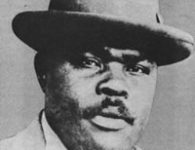
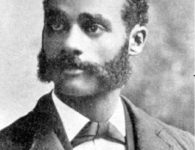


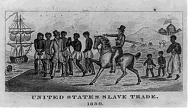
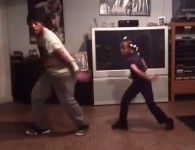

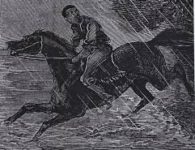
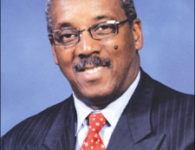


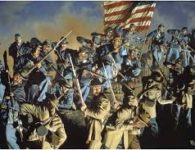
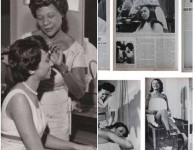

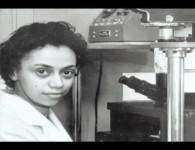

6 Comments
Has anyone discovered PunchFlix it is an astonishing corporation. They’re getting ready to raise fifty million dollars as part of their pre IPO. There’s no doubt that this really is a great business opportunity for sophisticated mainly because they have got the capability to be the next Hulu. Whatever way look over their website and possibly even try a membership. The ecstasy in the market is all about PunchFlix. The growth of PunchFlix has sparked the interest of shoppers expecting the app of this exceptional digital streaming motion picture and TV platform. PunchFlix is projecting one large amount of consumers streamingmovie on app. They really are selling a restricted quantity of shares, so at the very least have a look at it.
Wow, fantastic blog structure! How long have you ever been running a blog for?
you make blogging look easy. The entire glance of your web site is excellent, let alone the
content!
Incredible points. Sound arguments. Keep up the
good spirit.
Thanks on your marvelous posting! I quite enjoyed reading it,
you will be a great author.I will ensure that I bookmark
your blog and definitely will come back in the
foreseeable future. I want to encourage yourself to continue
your great posts, have a nice day!
At this time it looks like Drupal is the preferred
blogging platform available right now. (from what I’ve read)
Is that what you’re using on your blog?
Thanks for this post. I definitely agree with what you are saying.